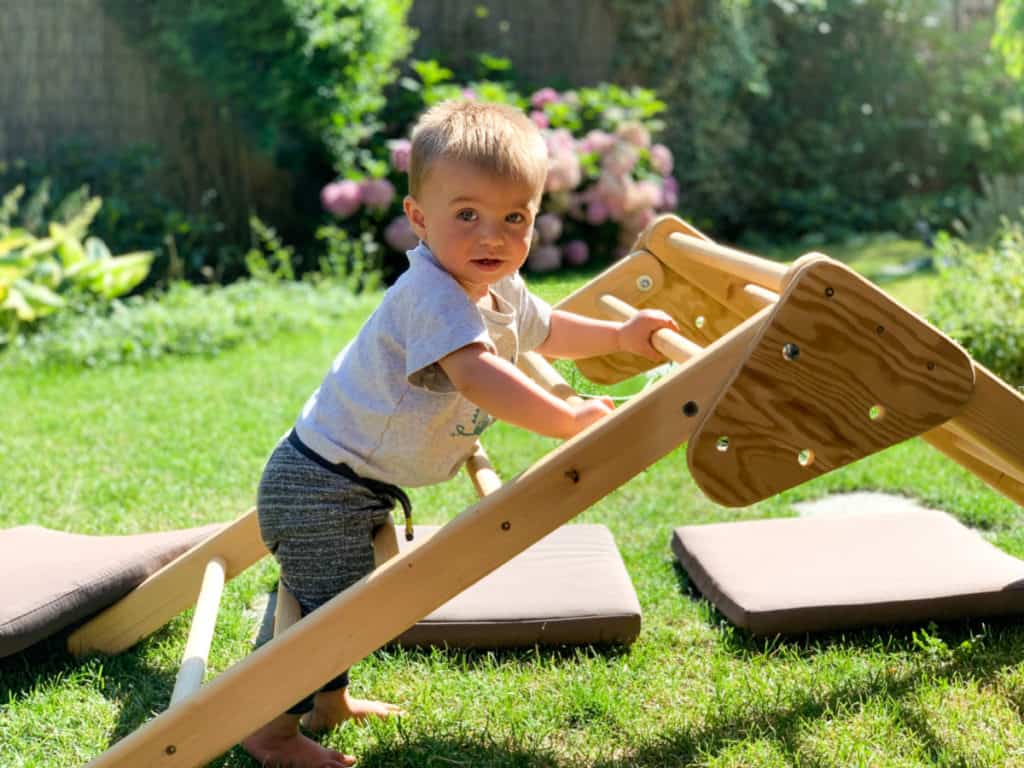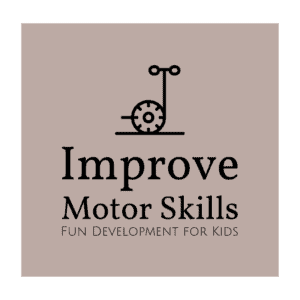Pikler triangles help your child develop their gross motor skills by climbing and balancing on the triangle. But how safe are they for your kid?
Pikler triangles are safe for your child if you follow certain guidelines, two of the most important being supervision and not forcing your child to any positions or activities. Kids need to proceed at their own pace, while you make sure they are safe doing it.

Below, you will find an overview of different aspects that you should consider for making the Pikler triangle as safe as possible for your child.
Supervision Is the Most Important Aspect of Keeping Your Child Safe on a Pikler Triangle
Once your toddler gets their first glimpse of a Pikler triangle, it will be hard to get them away from it. And that’s a good thing because the very reason you want to get one is to have your kids use it as much as possible. The more they climb and use all those little muscles, the more they will improve their gross motor skills and overall physical literacy.
But you need to be there for them. The first steps will be hard, so your support and help will be paramount.
The level of supervision depends on your child’s age and skills. When your kid is younger and is just starting to familiarize themselves with the Pikler triangle, you should be next to them whenever they are using it. They are still learning and mistakes happen often.
When your kid gains more confidence and improves their motor skills and balance (see a list of fun activities that improve kids’ balance), they will probably do well without your help. Nevertheless, you should never leave a toddler unsupervised on a Pikler triangle. They will gain more confidence, but at some point, they might become over-confident and that’s when accidents tend to happen.
Being there for them is also a great time for bonding with your child and working together to overcome obstacles.
But don’t forget that there is a difference between supervised play and being a helicopter parent. Don’t be the latter – give your kids room to explore on their own. This is how they will develop the skills they need for life.
Yes, your kid will probably fall from the triangle at least once but that might not be bad for them. They will learn from their mistakes and will try not to repeat the same mistakes again. And there are things you can do to reduce the dangers of a possible fall (see the list of the common mistakes in the following paragraphs).
Don’t Push Your Child to Something They Are Not Ready For
Your children will learn best if they can progress at their own pace. This means that you shouldn’t push them to positions and activities on the Pikler triangle that they are not ready for. Allow the kids to pick the activity that they want and to work on it for as long as they need.
Of course, you can (and should) encourage your kids to try new things but be patient and don’t push them too hard. Exploration on the child’s own terms is what leads to healthy development.
If pushed too far, the child may get stressed out, start to resent the activity, or fall and hurt themselves because they are not ready for a certain step.
There’s a great article about how to push kids without pushing too hard on childmind.org. Go check that out as well.
Common Mistakes When Using a Pikler Triangle
Always follow the manufacturer’s instructions when using a Pikler triangle. It’s a safe tool for improving some gross motor skills only if used in the right way.
We collected data from the safety cards of dozens of Pikler triangle manufacturers, plus added some from our own experience. Here’s what you should know to avoid the misuse of your Pikler:
- Don’t exceed the weight limit – it differs from product to product but most often the official weight limit is between 100 and 125 lbs (45 to 56 kg). While in reality the triangles generally withstand much more weight as can be seen on this Ette Tete Mopitri (image from their homepage, as of 8 July 2020), we do not recommend exceeding the limit set by the manufacturer.
- Age limit – it’s generally not recommended to introduce the Pikler triangle to your child before they are 6 or 8 months old. Unfortunately, age is very subjective in this case as kids are very different. The earliest time to introduce a Pikler triangle to your child is when they are ready to start climbing – e.g. trying to pull themselves up to a standing position.
- Have a flat surface below the triangle to give it more stability.
- Have enough free space around the triangle so your kids won’t hurt themselves if they fall off the triangle.
- Use a mat or carpet under the triangle to stop it from slipping on hardwood floors and to soften a possible fall.
- No socks – socks can be slippery and can cause the kid to fall. It is usually recommended that kids either wear shoes or are barefoot when using a Pikler triangle.
- If you are using a slide together with your Pikler triangle, don’t make it too steep.
- This one’s for the dads – always review the manufacturer’s instructions when assembling the triangle 😉
- Always put the Pikler triangle away after the kids have finished climbing on it (you don’t want them to go on it without your supervision).
Only Buy a High-Quality and Safe Pikler Triangle
While this might sound obvious, it’s really important that the structure your kid is climbing on is durable and meets all the required safety standards. So here are some things to pay attention to before buying one.
- Material quality – the frame and rungs should be made of hardwoods (e.g. birch or walnut), as they can withstand a lot of force. Most professionally made triangles on the market are of high quality but make sure you don’t buy cheaper materials, like pinewood, to save a penny when building one yourself.
- Lock to position – if you are looking for a foldable Pikler triangle (to save space when not in use), it should have the possibility to be locked into position when it is being used. There are triangles that don’t lock and can fold back to the default position if, for example, pushed against a wall. So the kid can unknowingly start climbing the triangle when it’s not fully in the climbing position.
- Safety standards and certificates – ask the manufacturer if they meet your local or international safety standards for kids’ equipment and if they have the related certificates. Many manufacturers are small family businesses who might not yet have such certificates but they should still comply with the regulations when building the triangles.
- Second-hand Pikler triangles – if you are looking to buy a used Pikler triangle, make sure to inspect it thoroughly for any possible damage before making the purchase.
If, before buying one, you want to better understand how much different Pikler triangles cost, check that link to another article on our page.
Conclusion
A Pikler triangle is a safe piece of equipment to improve your child’s gross motor skills if it is used correctly and if the child is supervised by an adult. It’s a great opportunity for your child to learn the skills they need in real life in a controlled environment. Be close by to make sure that they are safe but don’t be a helicopter parent and let them proceed at their own pace 🙂
If you are not sure which Pikler triangle to choose, check my comparison of 50+ Pikler triangles.
